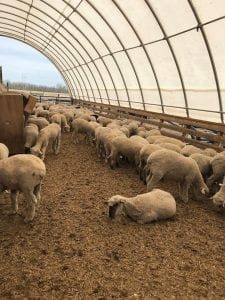Brady Campbell, Program Coordinator, OSU Sheep Team
In a continually changing society, today’s consumer is much different in the way they make purchasing decisions when compared to their parents, especially when it comes to the meat case. Go ahead, list some examples of the marketing strategies you have seen at your local and chain retail grocery stores. Labels such as organic, pasture raised, and no hormones added are just a few. As an example, I’m sure that many of you are familiar with Certified Angus Beef, but have you heard of their new line – Certified Angus Beef Brand Natural? Natural. A simple word that appeals and resonates with some many people. These beef products follow the same 10 specs that all beef must achieve in order to be marketed as Certified Angus Beef in addition to no antibiotics or added hormones. I understand the concept behind the label, consumers are looking for a wholesome, natural product that is raised in a manner in which we have reduced the use of antibiotics, thus decreasing the potential for the development of antibiotic resistance.
changing society, today’s consumer is much different in the way they make purchasing decisions when compared to their parents, especially when it comes to the meat case. Go ahead, list some examples of the marketing strategies you have seen at your local and chain retail grocery stores. Labels such as organic, pasture raised, and no hormones added are just a few. As an example, I’m sure that many of you are familiar with Certified Angus Beef, but have you heard of their new line – Certified Angus Beef Brand Natural? Natural. A simple word that appeals and resonates with some many people. These beef products follow the same 10 specs that all beef must achieve in order to be marketed as Certified Angus Beef in addition to no antibiotics or added hormones. I understand the concept behind the label, consumers are looking for a wholesome, natural product that is raised in a manner in which we have reduced the use of antibiotics, thus decreasing the potential for the development of antibiotic resistance.
In the same breath, according to a 2017 USDA survey, approximately 12% of American households remain food insecure. This figure increases Continue reading









